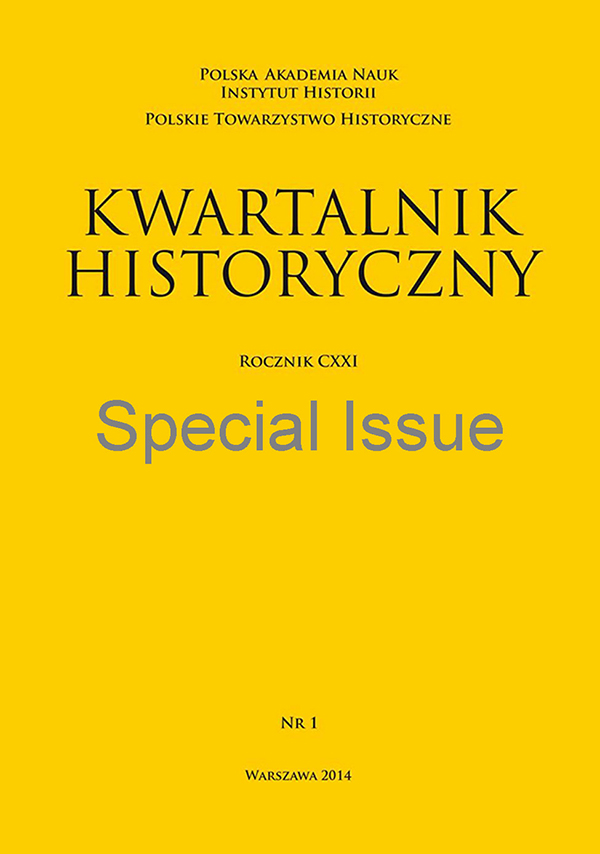The Coin in the Political Culture of the Middle Ages. On the Iconography of the Bohemian Deniers in the First Half of the Twelfth Century
DOI:
https://doi.org/10.12775/KH.2014.121.SI.1.01Abstrakt
The article is composed of three separate parts for which the common denominator is the use of the iconography of Bohemian deniers from the first half of the twelfth century. The images featured on the coins of Duke Svatopluk (1107–09), Vladislaus I (1110–25) and Soběslaus I (1125–40) constitute a point of departure for reflections on the essential components of the political culture of the Early and High Middle Ages.
In contrast to existing Czech literature the author interpreted the scenes presented on the deniers of Svatopluk and Soběslaus I (Cach nos. 460, 570) as an illustration of a ritual toast raised by the duke in honour of St Wenceslaus. It probably constituted a heretofore-unknown element of an annual celebration of the martyrdom of the saint (28 September), which entailed a convention and a three-day feast attended by the ruler and the lay and ecclesiastical lords.
Reflections in the second part focus on the depictions of Svatopluk, Vladislaus I and Soběslaus I (Cach nos. 460, 557, 573) in foundation scenes. The author examines the degree to which the application of a likeness of a ruler holding a model of a church reflected an actual religious foundation or the universal idea of the generosity towards the clergy. In the case of Vladislaus I and Soběslaus I the sources contain information about imposing ducal foundations, but in the case of Svatopulk there is no such correlation while the episode described by Cosmas and concerning the seizure of Church property by the duke for political reasons compels us to assume that the portrait of the ruler-founder on the coin was to obliterate the unfavourable impression produced by his conduct.
The third fragment is a new interpretation of a scene featured on a denier of Soběslaus I, earlier associated with the inauguration of his reign in 1125 (Cach no. 571). In this case, the author noticed a reference to current political events from 1130–31 (chiefly the conflict involving Soběslaus and Meinhard, the bishop of Prague). The scene showing two men praying in front of a centrally located object is interpreted as an act of swearing an oath by both antagonists on the relics of St Wenceslaus, probably after the bishop was cleared of an accusation of treason during the celebrations of the day of St Wenceslaus on 28 September1131.Pobrania
Opublikowane
Jak cytować
Numer
Dział
Statystyki
Liczba wyświetleń i pobrań: 418
Liczba cytowań: 0



